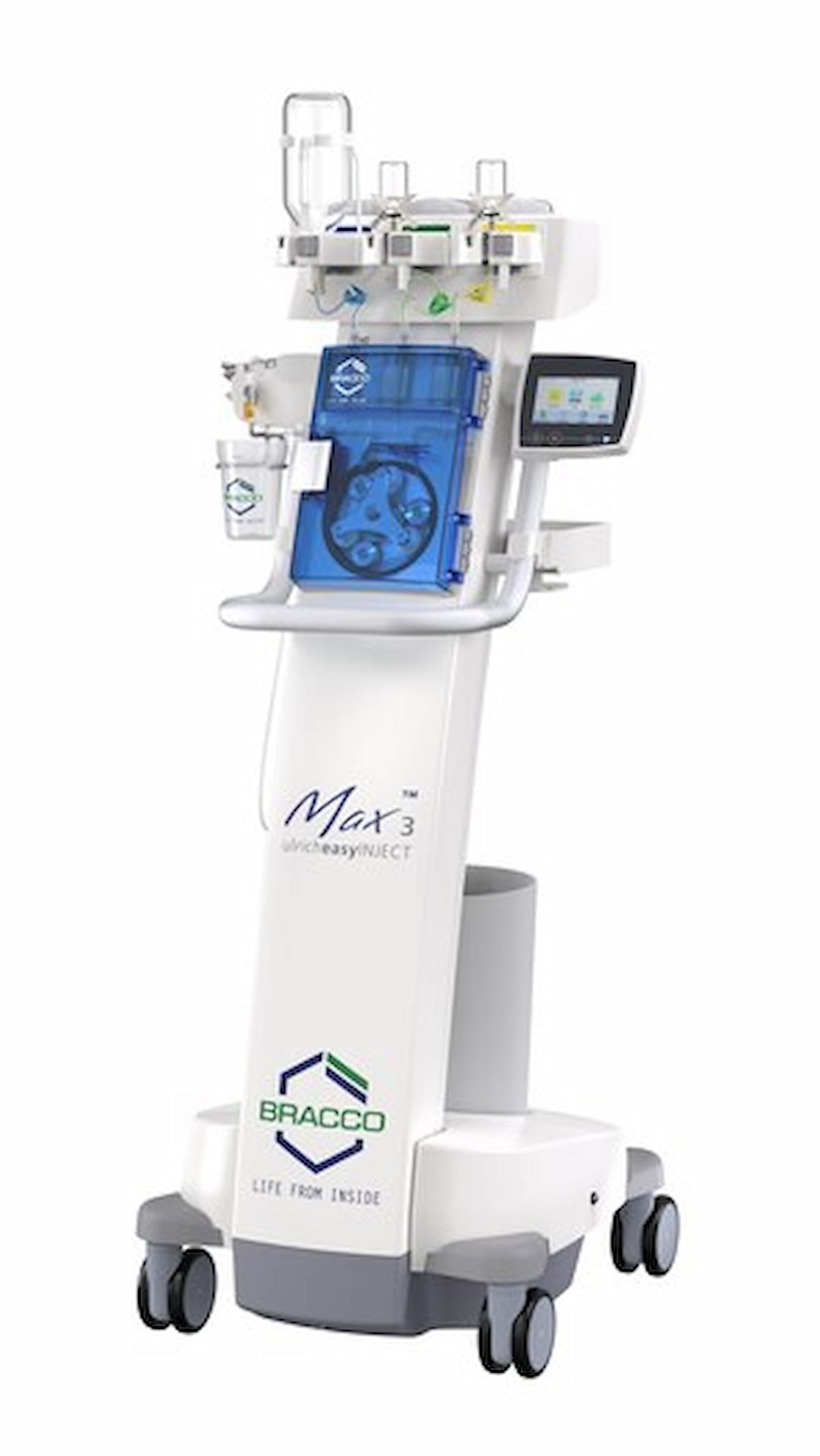FDA Clears Syringe-less Injector for MRI Contrast Media
The Max 3 syringe-less injector reportedly offers improved efficiency and intuitive features with contrast media use for magnetic resonance imaging.
The Food and Drug Administration has granted 510(k) clearance for the Max 3™ contrast media injector for use in magnetic resonance imaging (MRI) exams.
Offering ease of use features to foster workflow efficiencies, the Max 3 is a syringe-less injector, according to Bracco Diagnostics, the manufacturer of the modality, which was developed in collaboration with Ulrich Medical.
The syringe-less contrast media injector Max 3 garnered 510(k) clearance from the Food and Drug Administration (FDA) for use in magnetic resonance imaging (MRI) exams. (Image courtesy of Bracco Diagnostics.)

Emphasizing direct injection from original contrast media vials, Bracco Diagnostics highlighted the Max 3’s combination of the Easy-Click Cassette flex and SafeConnect. The company noted these features enable dedicated connection to patient tubing with protection from retrograde contamination. The connector with the Easy-Click Cassette can be utilized within a 24-hour period or up to a maximum of 96 bottles of contrast media, whichever occurs first, according to Bracco Diagnostics.
The company pointed out that the lack of power cables with Max 3 enable convenient positioning of the device within the MRI room. In addition to eliminating the need to refill syringes, Bracco Diagnostics said use of the Max 3 reduces disposable plastic waste.
"We're thrilled to bring an intuitive, easy-to-use, and environmentally friendly solution to the radiology community in collaboration with Bracco," said Klaus Kiesel, the chief executive officer of Ulrich Medical. "Together, we're taking MRI innovation to the next level in health care."
Can Contrast-Enhanced Mammography be a Viable Screening Alternative to Breast MRI?
June 17th 2025While the addition of contrast-enhanced mammography (CEM) to digital breast tomosynthesis (DBT) led to over a 13 percent increase in false positive cases, researchers also noted over double the cancer yield per 1,000 women in comparison to DBT alone.
Multinational Study Reaffirms Value of Adjunctive AI for Prostate MRI
June 16th 2025The use of adjunctive AI in biparametric prostate MRI exams led to 3.3 percent and 3.4 percent increases in the AUC and specificity, respectively, for clinically significant prostate cancer (csPCa) in a 360-person cohort drawn from 53 facilities.